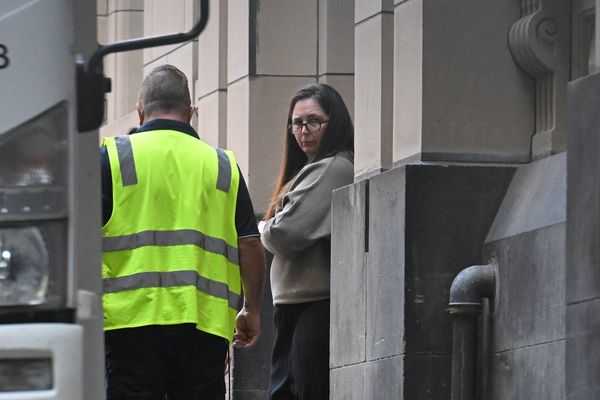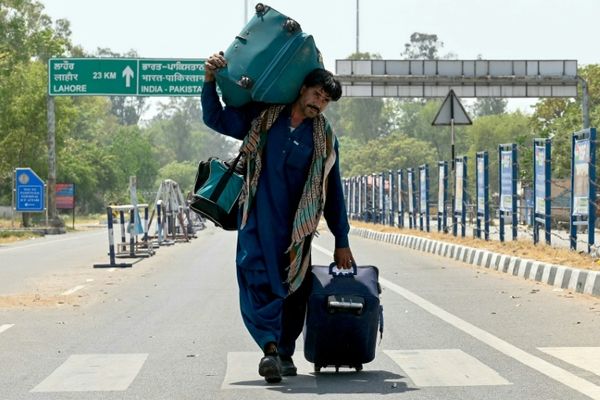
Australia will go to the polls on 3 May, with Anthony Albanese’s first-term Labor government facing an uphill struggle to retain its narrow majority in parliament.
Neither he nor the centre-right opposition leader, Peter Dutton, have sparked enthusiasm in the electorate, and polls suggest neither party may achieve an absolute majority in the 150-seat House of Representatives, meaning one or the other would need to negotiate with independents and minor parties to form government.
Albanese announced the election date on Friday morning in a Canberra press conference, pitching it as a choice “between Labor’s plan to keep building or Peter Dutton’s promise to cut” – referring to Coalition plans to sack 40,000 public servants – and said the economy was now “turning the corner” after a period of high inflation.
The prime minister had planned to call the election three weeks earlier, but was forced to postpone when Tropical Cyclone Alfred threatened to swamp Brisbane and surrounding areas.
That meant the government unexpectedly had to produce a budget, which it used to announce surprise tax cuts that would give all Australians a tiny amount of relief from the cost-of-living crisis when they start to take effect from 2026.
In response Dutton promised to halve the excise on fuel duty for a year to ease family budgets.
Such modest fiscal promises sit uncomfortably beneath the enormous shadow of global economic uncertainty cast by Donald Trump’s proposed tariffs, particularly those on Australian steel and aluminium exports to the US and tariffs aimed at Australia’s biggest trading partner, China.
Albanese came to power in 2022 promising a steady-as-she-goes return to post-Covid normality, but voters have been frustrated by high inflation and high interest rates and a pernicious housing crisis. Since 2019, Australians have experienced the sharpest fall in living standards of any of the countries in the OECD. In 2023, Australians’ disposable income fell by more than 5% while the OECD average increased by 2%.
Dutton, a former Queensland police officer whose image as a hardliner was forged in spells as immigration and home affairs minister, has gradually clawed his way back in the polls, particularly after successfully destroying the government’s proposal for an Indigenous voice to parliament at the 2023 referendum.
Despite hammering away at the government on the cost of living, his Liberal-National Coalition has brought few concrete policies to the election to deal with it. The Coalition’s biggest election policy is its plan to build a string of nuclear power stations. That proposal has been widely criticised on grounds of cost, time and impracticality in a country that does not have a nuclear power industry.
But it has allowed Dutton to relentlessly attack Labor’s ambitious transition to a power system built around renewables, which has aroused vocal opposition in some areas to new transmission lines and offshore wind proposals.
The campaign is likely to be won and lost in the outer suburbs and regional areas, which Dutton believes can be turned into reliable conservative heartland, while Labor, Greens and independents increasingly dominate the inner city. But both major parties have steadily lost support over the past two decades, accounting for less than 70% of the primary vote between them in 2022.
As a result a new crop of independents – branded as teals – took six seats from the Liberals in Sydney and Melbourne and Perth, campaigning primarily on climate and integrity issues. Whether they and other independents outside the main urban centres can hold or even increase that number will take on even greater significance if a hung parliament comes to pass.
The Greens face a tough battle to retain three inner-city Brisbane seats unexpectedly won in 2022, in addition to the Melbourne stronghold of their leader, Adam Bandt.
Voters are hardly greeting the campaign with enthusiasm – Australian federal elections come around every three years, and none of the main players are renowned for their sparkling performances on the campaign trail. With gen Z and millennials outnumbering boomers in the population for the first time at an election, the leaders’ painful efforts to talk the young people’s language have already become apparent.
Labor has taken heart from a small improvement in its polling and was buoyed in February by the first interest rate cut in four years, after 13 successive rises. It is banking on the electorate buying its claim that the economy has turned the corner and better times lie ahead.
But whatever the shape of the next government, those hard-won signs of improvement will be subject to whatever turmoil Trump unleashes during its three-year term.







